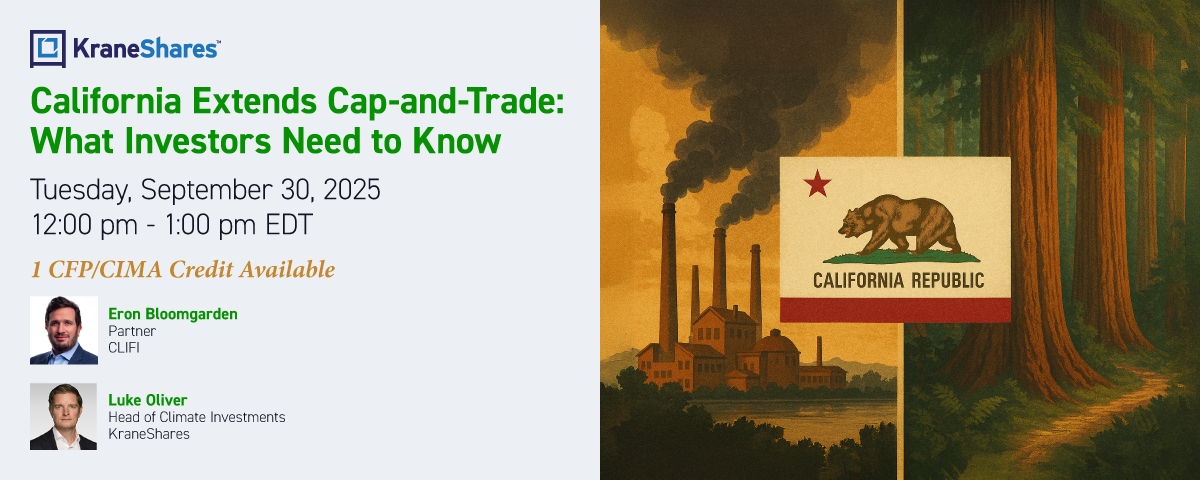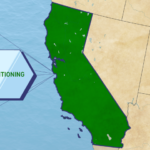
California Extends Cap-and-Trade: What Investors Need to Know
Tuesday, September 30, 2025 12:00 pm - 1:00 pm EDT
Please register below to attend this event
Event Details:
California Extends Cap-and-Trade: What Investors Need to Know Tuesday, September 30, 2025 12:00 pm - 1:00 pm EDT
California’s $73B carbon market just got a 20-year boost.1 California has officially extended its cap-and-trade program — now Cap-and-Invest — through 2045, providing a longer-term regulatory framework with tightening allowance supplies. Forecasts for prices could soon retest last year’s highs, break through the $65 tier-1 trigger, and potentially reach $130 as we approach 2030.2
Join Luke Oliver, KraneShares Head of Climate Investments, and Eron Bloomgarden, Partner at Climate Finance Partners (CLIFI), for a timely investor update on what these policy changes mean for carbon prices, portfolio construction, and the broader energy transition. He will cover
- Key updates from AB 1207 and the Cap-and-Invest framework
- How reduced allowance supply could affect price trajectory and liquidity
- Growing institutional interest, with $55M in recent allocations3 and coverage from Cambridge Associates & CFA Institute4
- Forward-looking scenarios for CCA pricing through 2030
- How the KraneShares California Carbon Allowance Strategy ETF (Ticker: KCCA) provides investors exposure to CCAs
- Comprehensive Q&A
Investors can submit questions by emailing [email protected]
1 CFP/CIMA Credit Available
Please email [email protected] to receive credit.
Forward-looking scenarios are hypothetical and not guarantees of future results. Actual prices may differ significantly due to market and regulatory risks.
For KCCA standard performance, top 10 holdings, risks, and other fund information, please click here.
Citations:
Cambridge Associates, “Are California Carbon Allowances an Attractive Investment?” May 2025; Yushuo Yang, CFA, CFA Institute, “Global Compliance Carbon Markets: Structure Explained,” August 12, 2025.
Data from Bloomberg as of 12/31/2024, based on annual futures trading volume.
Price levels based on 2026 tier 1 forecast and 2030 price ceiling forecast. Cost-containment reserves (CCR) serve as speed bumps to help stabilize the market and prevent prices from spiking by unlocking an additional allowance reserves at two predefined tier price levels, softening prices in the interim as the market absorbs the added supply.
Data from Bloomberg and KraneShares as of 9/18/2025.


















